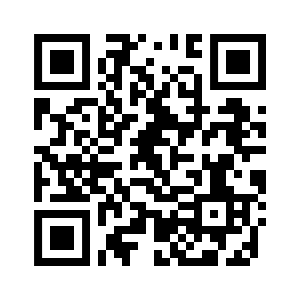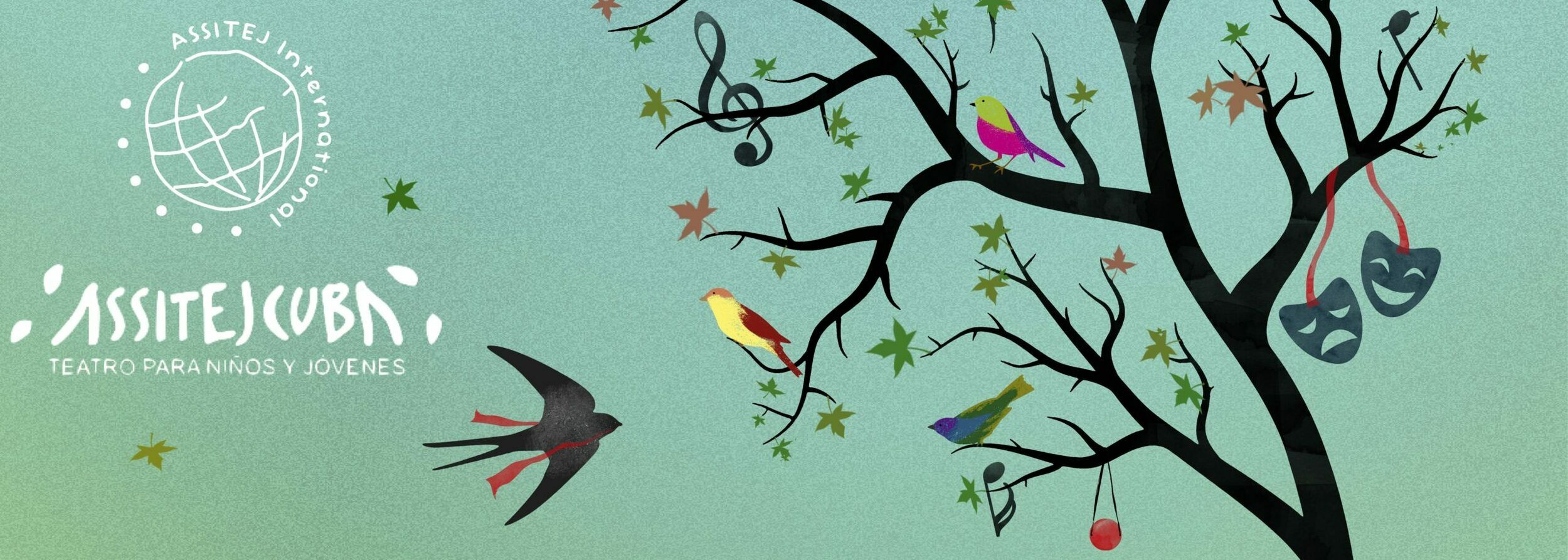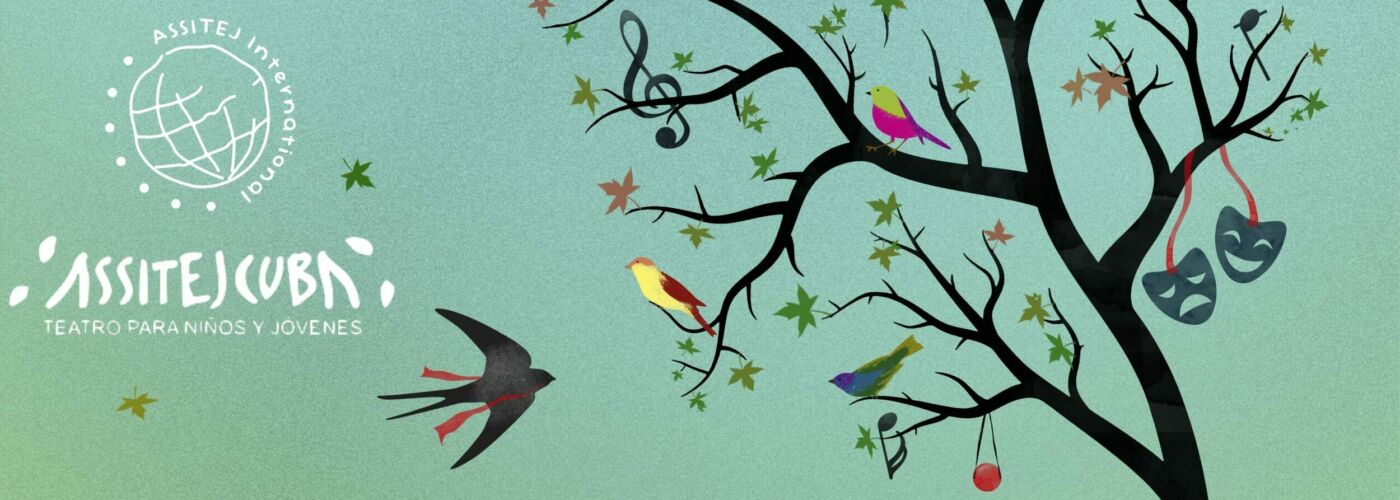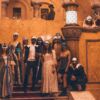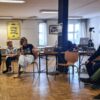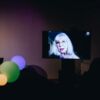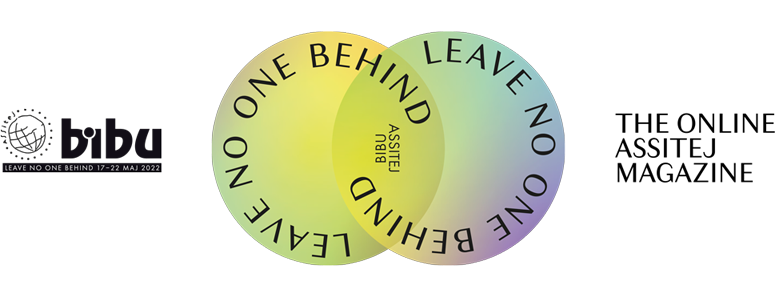Maike Gunsilius
“Kultur macht stark!” : “Culture makes us strong!” This belief lies behind programmes such as Wege ins Theater, Zur Bühne, tanz + theater machen stark, ChanceTanz and others.[1] The ability of artistic experience to irritate and transform an individual’s relationship with themselves and with the world, thereby making them a stronger subject, is something often witnessed by theatre educators – and it frequently drives their day-to-day artistic and educational work. Participation in culture is a right of children and young people that has been stipulated by the UN Convention on the Rights of the Child since 1990.[2] Kultur macht stark! aims to enable all children and young people to participate and benefit from cultural provision, resources and aesthetic experiences.
Its programming follows on from a discussion of children’s (cultural) education that views the “strong subject” (Fuchs 2016; Taube et al.2017) as the aim of educational processes. What makes the “strong subject” strong? It is a subject that acts autonomously and with self-efficacy, participating in the world and transforming its relationship with that world creatively. Firstly, this presumes an already strong subject with considerable potential that experiences the world actively. Secondly, an initially weak, possibly deficient subject is constructed that can only be strengthened or established through all kinds of support and development measures (see Unterberg 2017).
These two different readings coincide in paradoxical fashion in the programming and funding schemes of the Kultur macht stark! programme. For example, the funding scheme Wege ins Theater is intended to reach children and young people “who are confronted with social, financial and educational disadvantages.[3]” Whether these children are addressed as strong or weak subjects is initially left open. What are specified are their weak social positions and the objective: they should find Wege ins Theater – “ways into the theatre” – that are currently closed to them.
Barriers to access to the performing arts lie both outside the theatre in precarious circumstances, experiences of poverty and various corresponding forms of educational disadvantage. However, there is increasing self-identification of exclusions within the theatre and educational practice that are frequently dominated by so-called middle-class bias. In addition to factors such as ticket prices, mobility, family or school peers and invitation policies, exclusionary mechanisms relating to content, location, process and aesthetics also come into effect: which stories are told, which formats are developed – by whom, using which tools, in which circumstances and who is represented on stage or backstage, also determines how inclusive and how empowering children and young people experience the theatre and its possibilities to be – and whether they want to and will find ways into the theatre (again).
A first paradox is evident in the application process: it is generally compulsory for funding applications to articulate the positive and strengthening effects of educational theatre projects for potential subjects participating in the process (and often the competences they have yet to be trained in).
In this description a focus on the deficits of children and young people manifests itself all too often, distracting attention from their disadvantaged circumstances. However, it is precisely these structural exclusions, discriminations and society’s power structures that make it difficult for subjects to be strong, because they are forced into weak social positions.
A second paradox is represented by forms of address and invitations to participate: open invitations for theatre projects are often successful at reaching those who are privileged in various ways without breaking through the access barriers for other potential participants. This dilemma is also encountered by theatre educators when they actively seek out their potential target group, for example in especially ‘underprivileged’ urban areas and linked to a variety of different institutions. But when theatremakers visit gyms, local cafes, community centres and school playgrounds in urban areas that are often stigmatised as socially weak to bring theatre to children and young people, this can be rapidly perceived as a missionary, in some circumstances colonialist, gesture that reproduces marginalising assumptions. Anna Eitzeroth has made some praxis-based suggestions about how theatre educators can approach children and young people and what they should be aware of (see Eitzeroth 2017).
A third paradox is that of acceptance or rejection: educational theatre interventions and low threshold projects are largely favourably received by the target group they address, yet often rejected due to lack of interest. “No… not theatre, not for me!” (Bühler et al. 2019), “theatre is unnecessary…”, “theatre is haram…” (Gunsilius/Kowalski 2021; Gunsilius 2021). When children and young people say similar things and run away from theatremakers and theatre educators, or leave visits to performances, rehearsals or workshops, it raises the question of the extent to which theatre and educational theatre provision is what its target group actually wants and whether it can offer them empowering experiences.
Next: no one has to make or like theatre – part of the potential target group may simply have no interest in educational theatre provision. However, it is an interesting question: when is educational theatre provision a right to cultural participation and when is it experienced as a duty – and to what extent can it open up room for possibilites?
According to the educational scholar Manfred Liebel, children are interested in their rights and pay active attention to them when they have a direct effect on their lives and can be seen as an opportunity to take action. In the rights inscribed in the UN Convention on the Rights of the Child, Liebel sees two historical trends within the children’s rights movement converge: while the “paternalistic” line views children’s rights “exclusively as the responsibility and duty of adults, or states, to ensure the children’s wellbeing” (Liebel 2017: 388) the second understands “children’s rights as also subjective or active rights” and aspires to “children becoming active participants in society” (ibid.) Liebel points out that a praxis of children’s rights that is centred around children’s participation in society should not only pay attention to “children’s actions and ability to act” (ibid.), it should also question their unequal living conditions and positions of power.
In terms of educational theatre praxis, this means: how children and young people accept an offer of educational theatre and what they do with it depends to a significant degree on whether they experience it as a charitable or encouragement activity by adults or whether it has evolved from or coincides with their interests, offers them a chance to do something and also affects their position (of power) in society. An educational theatre activity that makes young citizens “strong” by focussing on these three criteria may perhaps not follow the objective of getting young people into the theatre. Rather it can be decribed as a praxis within which children and young people are supported by the means, modes and formats of theatre when what matters is to articulate their interests, pursue them actively and by doing so claim a stronger position within society. When, as part of educational theatre projects, children travel to unfamiliar parts of the city with social researchers to swap their school day with other children and investigate it (Der Klassentausch, FUNDUS THEATER/Forschungstheater, 2015); when children test the food in their neighbourhood and train adults in different parts of the city for the challenge of creating healthy, affordable food (Happy Eatium, Mammalian Diving Reflex, 2017); when children and young people form a Theatre Council (Platz für Spielraum, GRIPS Theater 2018/2019) and advise theatremakers and their institutions, then they use the tools of theatre and performance to become involved in social processes. They do not have to be taught the ABC of the fundamentals of theatre acting and directing first. Within a clearly established performative framework that allows them to be freely active, they can immediately get going and familiarise themselves with the theatre’s possibilities by using them, performing their own agenda in public as strong subjects. When theatre educators perceive their artistic praxis in this way as a democratic (educational) praxis and use their expertise to devise framing devices in which children and young people can adopt a strong social position – then theatre is a way towards greater cultural, social and political participation by children and young people. For theatre educators this often means accepting unfamiliar partners, content and aesthetic means and devising heterogeneous formats. It might possibly also mean bidding farewell to established aesthetic tools, forms of representation and presentation and educational ambitions. Under certain circumstances it requires them to rethink how they structure and sequence time and, together with children and young people, to invent new, unfamiliar ways to generate participation in society practiced through art – using theatre.
Literature
Bühler, Xenia/Grüssinger, Anna/Rausch, Josefine (2019): „Theater in die Vororte bringen. Experimente im Münchner Stadtraum“, in: Ixypsilonzett 2/2019, pp. 30–31.
Fuchs, Max (2016): Das starke Subjekt: Lebensführung, Widerständigkeit und ästhetische Praxis. Müchen: Kopaed.
Gunsilius, Maike/Kowalski, Hannah (2021): Handeln. Entscheiden. Performen. Künstlerische Forschung mit Kindern. Bielefeld: Athena /wbv.
Gunsilius, Maike (2021): „Perform, Citizen!? Paradoxien von Performance in der Theaterpädagogik“, in: Pinkert, Ute/Driemel, Ina/ Kup, Johannes/Schueler, Eliana (eds.): Positionen und Perspektiven der Theaterpädagogik, Milow, pp. 152–163.
Liebel, Manfred (2017): „Ist Paternalismus gegenüber Kindern unvermeidbar? Plädoyer für eine antipaternalistische Kinderrechtspraxis“, in: neue praxis 4/2017, pp. 384–398.
Taube, Gerd/Fuchs, Max/Braun, Tom (eds.): Handbuch Das starke Subjekt. Schlüsselbegriffe in Theorie und Praxis. München: Kopaed.
Unterberg, Lisa (2017): „Der Blick auf das Subjekt. Zwei Perspektiven der Selbstermächtigung“, in: Taube, Gerd/Fuchs, Max/Braun, Tom (Hg.): Handbuch Das starke Subjekt. Schlüsselbegriffe in Theorie und Praxis. München: Kopaed, pp. 365–372.
About the Author
Maike Gunsilius is Professor of the Aesthetics of Theatre for Young Audiences at the University of Hildesheim.
First published in IXYPSILONZETT Jahrbuch/2022, Theater der Zeit, 2022, p.36-38.
[1]https://www.buendnisse-fuer-bildung.de/de/inhalt-und-ziele-1715.html (accessed: 18.09.2021)
[2]https://www.bmfsfj.de/resource/blob/93140/78b9572c1bffdda3345d8d393acbbfe8/uebereinkommen-ueber-die-rechte-des-kindes-data.pdf (accessed 18.09.2021)
[3]https://www.wegeinstheater.de/fileadmin/wegeinstheater/WiT2/WegeinsTheater_Ausschreibung_Frist_30.09.pdf (accessed: 8.9.2021)
